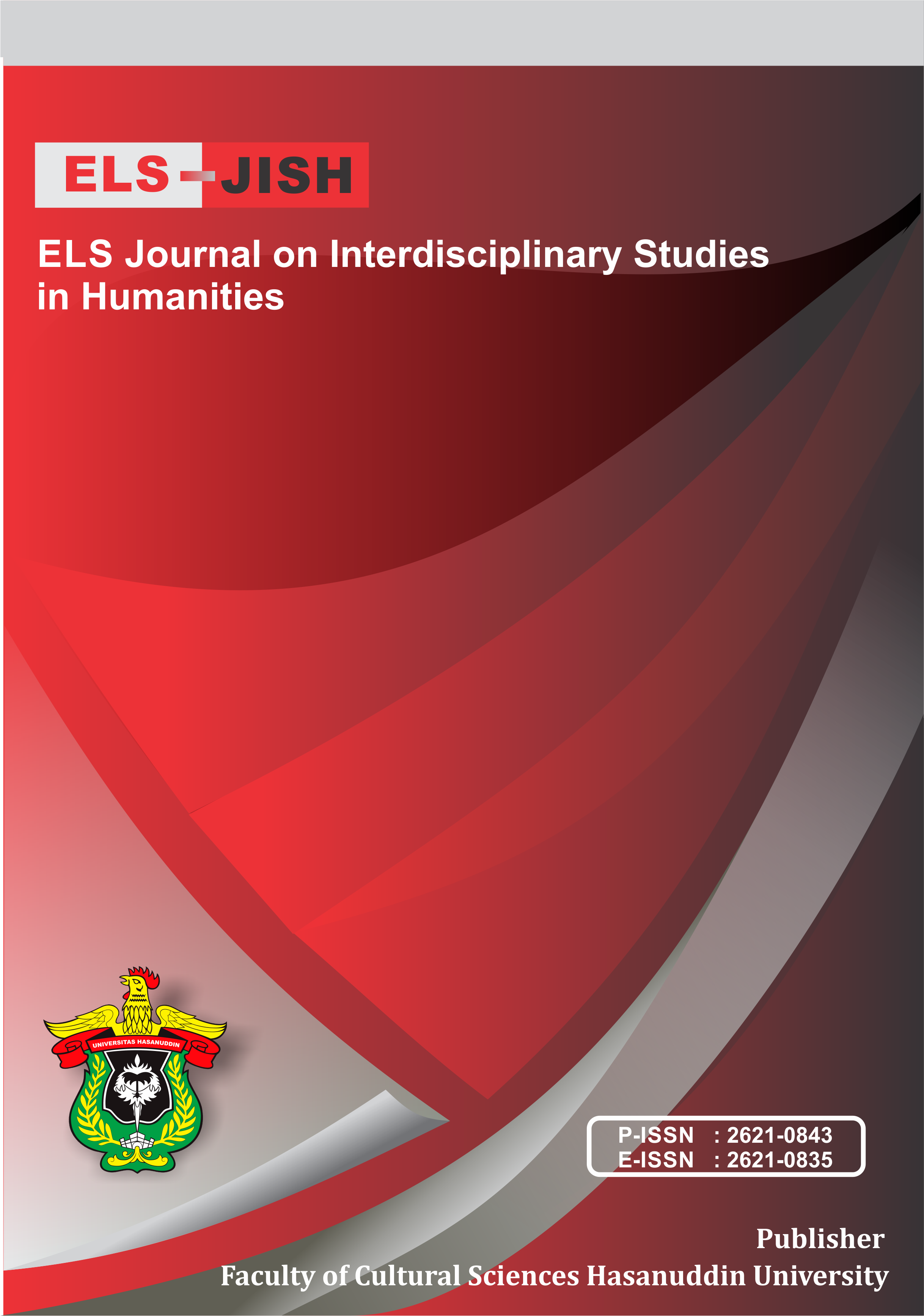The Motives of Violence in the Novel Perempuan Kamar By Agus Subakir
DOI:
https://doi.org/10.34050/elsjish.v4i2.14295Keywords:
Literary work, Motives, Novels, Structuralism., Victims, ViolenceAbstract
This study aims to reveal the motive for the occurrence of violence in the novel Perempuan Kamar by Agus Subakir. This novel is written in Indonesian and includes works of interest. It was firstly published in 2020. The data collection method used in this study is the literature study method. The data of this research are in the form of pieces of texts from works that show violence. The data analysis method used in this research is the descriptive qualitative method. The type of data that will be used in this research is in the form of words, phrases, sentences, and paragraphs that have a direct relationship with the motive for the occurrence of violence in the novel. The results showed that there were two or three motives for the occurrence of violence, namely (1) a sense of hatred towards the victim, (2) an unfulfilled excessive obsession, and (3) a lack of resistance from the victim.
References
Based on the sociological study of literature that has been carried out on the novel Perempuan Kamar by Agus Subakir, it can be concluded that the novel Perempuan Kamar by Agus Subakir describes incidents of violence committed against the main character, which in this case is a female character. it is not just one form and occurs repeatedly. The occurrence of violence is certainly motivated by different motives. In the novel, it is found that there are three motives for violence against the main character, in this case, Srebrenika. The results showed that the motives for the violence were (1) hatred for the main character, (2) an unfulfilled excessive obsession, and (3) a lack of resistance by victims of violence. The implication of this research is that awareness arises not to commit violence against women.
References
Arniati, F., Darwis, M., Rahman, N., & Rahman, F. (2019). Mother Behavior to Their Daughters As Seen in''Pride and Prejudice" and" Little Women". ELS Journal on Interdisciplinary Studies in Humanities, 2(4), 620-625.
Damono, Sapardi Djoko. 1979. Sosiologi Sebuah Pengantar. Pusat Pembinaan dan Pengembangan Bahasa Departemen Pendidikan dan Kebudayaan: Jakarta.
Endraswara, Suwardi. 2013. Teori Kritik Sastra. CAPS (Center for Academic Publishing Service): Yogyakarta.
Faruk. 2012. Pengantar Sosiologi Sastra: Dari Strukturalisme Genetik sampai Post-Modernisme. Pustaka Pelajar: Yogyakarta.
Fromm, Erich. 2015. The Anatomy of Human Destrutiveness. Diterjemahkan oleh Imam Mutaqqin. Pustaka Pelajar: Yogyakarta.
Junus, Umar. 1988. Karya sebagai Sumber Makna. Dewan Bahasa dan Pustaka: Kuala Lumpur
Komnas Perempuan. 2021. CATAHU 2020 Komnas Perempuan: Lembar Fakta dan Poin Kunci. in https://komnasperempuan.go.id/siaran-pers-detail/catahu-2020-komnas-perempuan-lembar-fakta-dan-poin-kunci-5-maret-2021. (Accessed on May 1, 2021).
Nurgiyantoro, Burhan. 2007. Teori Pengkajian Fiksi. Gadjah Mada: Yogyakarta.
Rahman, F. (2017a). Cyber literature: A reader–writer interactivity. International Journal of Social Sciences & Educational Studies, 3(4), 156.
Rahman, F. (2017b). Literary Translation and Cultural Transformation. In Conference: The 2nd Annual Seminar on English Language Studies at: Aula Mattulada FIB UNHAS, Makassar-IndonesiaVolume (Vol. 1).
Ratna, Nyoman Kutha. 2015. Penelitian Sastra. Pustaka Pelajar: Yogyakarta.
Sangidu, 2004. Metode Penelitian Sastra, Pendekatan Teori, Metode, dan Kiat. UGM: Yogyakarta.
Siswantoro. 2010. Metode Penelitian Sastra. Pusat Pelajar: Surakarta.
Subakir, Agus. 2020. Perempuan Kamar. Basabasi: Yogyakarta.
Teeuw, A. 2013. Sastra dan Ilmu Sastra. Pustaka Jaya: Bandung.
Wellek dan Austin Warren. 2009. Theory of Literature (Diterjemahkan oleh Melani Budianto). PT Gramedia Pustaka Utama:Jakarta.
Downloads
Published
Versions
- 2021-07-08 (2)
- 2021-06-29 (1)
Issue
Section
License
Copyright (c) 2021 Risa Anjelitha Ashar, Inriati Lewa, Syafri Badaruddin

This work is licensed under a Creative Commons Attribution-NonCommercial-ShareAlike 4.0 International License.






